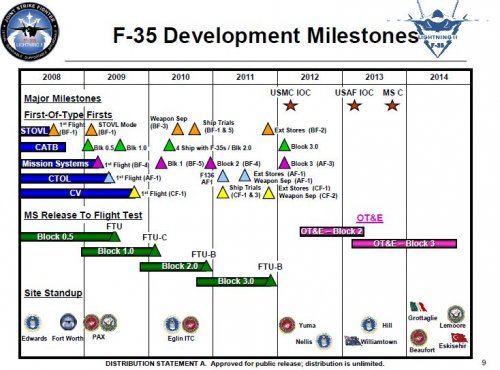LowObservable said:
TT - Lost you on the $47 million difference between the number you pulled out of your right ear and the one you pulled out of your left, since you never did come up with anything to suggest that the $107 mil from a news aggregator covered the same things as an APUC, a flyaway or anything else.
Found on F16.net:
Budget Gripen E: Swiss
22 Gripens: CHF 3,126 billion ($3386 million)
Fixed price, covering the government of Sweden any cost over-run
Total cost per Gripen E: $153.9 million
Swiss Gripen E: as far as known yet > some $108 million per Gripen E (Swedish Gripens 15-30% more expensive)
Total:
Lease: 11 Gripen C/D’s (8 Gripen C / 3 Gripen D)
CHF 44 million per year > $ 47.6 million per year
Till 2021, at least 5 years > CHF 220 million = € 182.16 million = $ 240.62 million
22 Gripen E: CHF 3,126 billion > $3386 million
Lease: CH 220 million > $ 238.34
Total: CHF 3,346 million > $3,624.9 million
Total cost, including lease 11 Gripen C/D’s (5 years): $166.35 million per Gripen E
Extra costs
A. Dual seat Gripen:
No Gripen F will be developed. Too expensive and there is no money to develop.
The Swiss will have to order Gripen D’s or will have to lease these jets from Sweden.
Another option, they will use Swedish Gripen D’s (cooperation).
B. 4 Reconnaissance pods
Like for instance Rafael RecceLite reconnaissance pod as mentioned by general Markus Gyrax)
(RAFAEL of Haifa, Israel and the Dutch Ministry of Defense have signed a $40-million contract – 6 pods)
C. Pods like Litening AT pods: ?
The Swiss want to introduce this capability again
Flying cost Gripen E (Swiss)
Source: Lt Gen. Markus Gygax, commander Swiss Airforce
Article: Getting the Gripen, Airforces Montly, jan. 2012
22 Gripen E: operating cost per year, next 30 years
Per year: CHF 100 million = $108.34 million
Per Gripen E: CHF 4.54 million = $ 4.92 million per year
(180 hours: $27.333.33 per flying hour)
Switzerland will have rebuilt second-hand Gripen
Beni Gafner. Updated 09/26/2012
Quote: Estimated in the draft are the operating costs: 102 million francs per year (6 million Swiss francs for the operation of real estate included). The operating cost per hour in the template are not explicitly mentioned.
This amount, taking into account the specified annual costs for personnel (24 million), maintenance (51 million) and fuel (21 million), more so than in previous presentations Saab journalists presented.
The calculation of operating costs per hour sets the Switzerland based on a flight operating time of 180 hours per year.
At 22 Gripen, this gives cost of 24'242 francs per flight hour.
Saab announced during a presentation in Sweden at a price of less than 10,000 francs. (Basler Zeitung) Here is still a need for clarification. (Basler Zeitung)
http://translate.google.nl/translate?sl ... 2F18471087
o Gripen E’s for Switzerland, as well as for Sweden will not be brand new.
For every Gripen E a Gripen C (D) airframe will be needed to build a Gripen E
o No dual seat Gripen F will be developed (there is no money to develop a dual seat Gripen F)
Gripen D’s will be needed for training (different engine than a Gripen E?)
o Gripen E’s will not be build in Switzerland, only some personnel will work in Sweden.
o The Swedish government guarantees to pay cost overruns for Switzerland, in case the Gripen E will become more expensive.
* The Swiss will not have to pay development costs, what is quite extraordinary.
The Gripen E does not exist yet, the jet still will have to be developed
When a decision will not be made in time, Saab will loose crucial personnel for developing and production of the Gripen E.
When the first Gripen E’s will be delivered, the Gripen E will have to be tested like any other jet, with all problems like other jets did had as well (Tyhoon etc)
It will take at least some years, after delivery, before any Gripen E will be operational
The last ten years the Gripen became a very expensive jet as well, it’s hardly impossible to expect there will be no cost overruns during development of the Gripen E.
When the Swiss will not decide to order the Gripen E (referendum), Sweden as well will not order the Gripen E (2014).
A new production line will be needed. Production is only possible when at least 60 Gripen E's will be build in cooperation with another country.
Possible order Sweden: 40-60 Gripens. It's not possible to develop and build the Gripen E by Sweden itself.
In case the Swiss will not order the Gripen E, only Brazil or Canada could save the Gripen E (although it doesn't seem Brazil will order the Gripen E)
(Used rates currencies: Jan.11, 2013)
http://translate.google.nl/translate?sl=de&tl=en&js=n&prev=_t&hl=nl&ie=UTF-8&layout=2&eotf=1&u=http%3A%2F%2Fwww.bernerzeitung.ch%2Fschweiz%2Fstandard%2FDie-Schweiz-erhaelt-umgebaute-OccasionsGripen%2Fstory%2F18471087


